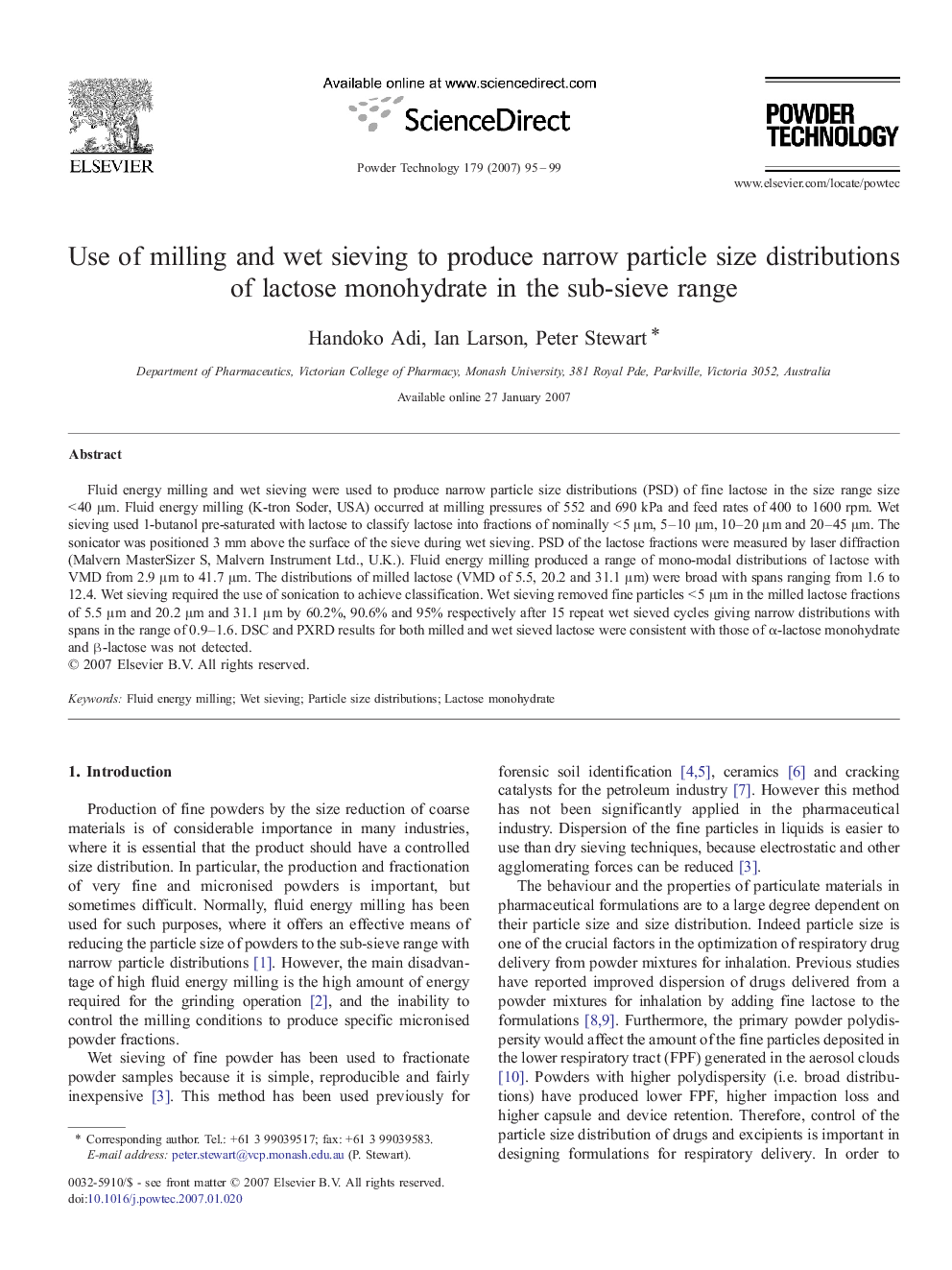| Article ID | Journal | Published Year | Pages | File Type |
|---|---|---|---|---|
| 239033 | Powder Technology | 2007 | 5 Pages |
Fluid energy milling and wet sieving were used to produce narrow particle size distributions (PSD) of fine lactose in the size range size < 40 μm. Fluid energy milling (K-tron Soder, USA) occurred at milling pressures of 552 and 690 kPa and feed rates of 400 to 1600 rpm. Wet sieving used 1-butanol pre-saturated with lactose to classify lactose into fractions of nominally < 5 μm, 5–10 μm, 10–20 μm and 20–45 μm. The sonicator was positioned 3 mm above the surface of the sieve during wet sieving. PSD of the lactose fractions were measured by laser diffraction (Malvern MasterSizer S, Malvern Instrument Ltd., U.K.). Fluid energy milling produced a range of mono-modal distributions of lactose with VMD from 2.9 μm to 41.7 μm. The distributions of milled lactose (VMD of 5.5, 20.2 and 31.1 μm) were broad with spans ranging from 1.6 to 12.4. Wet sieving required the use of sonication to achieve classification. Wet sieving removed fine particles < 5 μm in the milled lactose fractions of 5.5 μm and 20.2 μm and 31.1 μm by 60.2%, 90.6% and 95% respectively after 15 repeat wet sieved cycles giving narrow distributions with spans in the range of 0.9–1.6. DSC and PXRD results for both milled and wet sieved lactose were consistent with those of α-lactose monohydrate and β-lactose was not detected.
Graphical abstractFluid energy milling and wet sieving produced narrow particle size distributions of fine lactose < 40 μm. Fluid energy milling produced mono-modal distributions of lactose. The distributions of milled lactose were broad (spans 1.6–12.4). Wet sieving with sonication reduced fine particles in the milled lactose fractions of 5.5 μm, 20.2 μm and 31.1 μm by 60.2%, 90.6% and 95% respectively after 15 repeat wet sieved cycles (spans 0.9–1.6).Figure optionsDownload full-size imageDownload as PowerPoint slide
